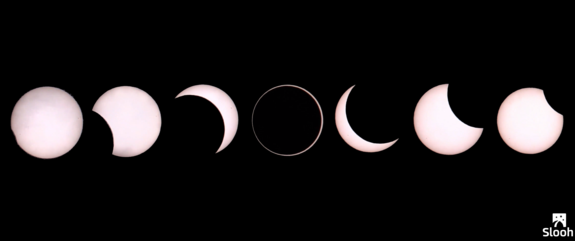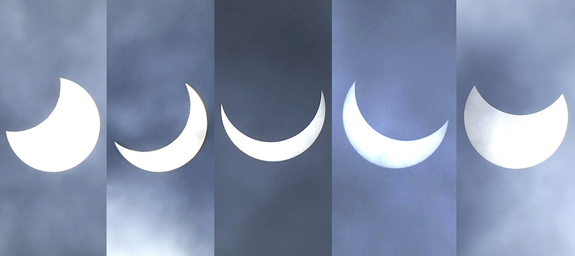A glorious solar eclipse made its way across the African sky early this morning (Sept. 1). As the moon crossed the sun’s face, the two created a “ring of fire” that glowed in the sky for about 3 minutes.
Viewers from Gabon to Tanzania to Madagascar could see the annular solar eclipse , with the moon crossing the sun front and center. At least a partial solar eclipse, in which the moon appears to have taken a bite out of the sun, was visible from most of Africa.
The rest of the world was also able to witness the eclipse from afar, thanks to the Slooh Community Observatory , which broadcast live online views from several telescopes around Africa. Slooh and Weathernews Japan also provided this amazing time-lapse view of the eclipse as seen from Reunion Island, east of Madagascar.

Annular solar eclipse of Sept. 1, 2016, as seen from Reunion Island, east of Madagascar.
Credit: Slooh and Weathernews Japan
Even for observers gazing up at a partial eclipse under cloudy skies, the view was spectacular. In Tanzania, photographer Dominyk Lever captured some stunning images of the cloud-covered partial eclipse. [What is a Solar Eclipse, and When is the Next One?]
“I was worried initially that a cloudy day here in Arusha was going to stymie my efforts, but it turned out to be easier to capture the images through the clouds,” Lever told Space.com in an email.
Clouds often block the view during skywatching events. But in this case, the clouds actually helped dim the sun’s dangerously bright glow without getting in the way. (Warning: Never look directly at the sun, even during an eclipse, without proper protection; serious and permanent eye damage can result.)

Partial solar eclipse over Arusha, Tanzania, on Sept. 1, 2016.
Credit: Dominyk Lever
Lever is a safari guide who usually spends his time taking pictures of animals, landscapes and people. With a decent viewing spot for the eclipse in Tanzania, he decided to take a stab at some astrophotography as well. “I was excited by the challenge of photographing such a unique event,” he said.
Lever’s experience was such a success that he now plans to travel to the United States next year to witness a total solar eclipse.
Next year, the “Great American Total Solar Eclipse ” will darken skies across much of the continental U.S. on Aug. 21. The “path of totality” stretches from Oregon to South Carolina.
A total solar eclipse hasn’t been visible from the U.S. mainland since 1979, so you won’t want to miss this one. (But if you do, don’t despair; another total solar eclipse will darken skies over Texas, the Midwest and the Northeast in 2024.)
Email Hanneke Weitering at hweitering@space.com or follow her @hannekescience . Follow us @Spacedotcom , Facebook and Google+ . Original article on Space.com .
Comments are closed.